Branding and Marketing Tips
Humans are emotional and brands are based on emotions and feelings with the goal to connect, resonate and spread to other like-minded customers. This creates positive growth.
Businesses need to see the details through the eyes, hearts and minds of people and you use words, messages, images and styles to allow the customer to see something bigger and better for themselves. This is how you build your Brand whether that is personal, product, service, company, region or country.
Good brands can easily be distinguished. They are professional, consistent and meet expectations. Branding, corporate identity, logos, style manuals, icons – what does it all mean to a business and how does it affect you in the marketplace?
Brand Action have been working towards educating our clients for many years on how to break apart these elements and this useful page should give you a clear and simple overview as to each element and where you can address what your organisation needs.
- Top 10 Branding Tips
- Branding (it’s about trust)
- Corporate Identity (it’s about management)
- Logos (it’s your only mark)
- Trademarks – insurance policy
What is a brand?
The term “brand” first emerged more than half a century ago as a way for cattle ranchers to identify their animals. In the late 1880s, packaged goods like Coca-Cola started taking off. Brands were used to differentiate them from the generic competition.
But as branding progressed, marketers realized there was more to the brand of Coca-Cola than just a non-generic name. David Ogilvy, the “Father of Advertising,” defined the brand as “the intangible sum of a product’s attributes.”
You can consider a brand as the idea or image people have in mind when thinking about specific products, services and activities of a company, both in a practical (e.g. “the shoe is light-weight”) and emotional way (e.g. “the shoe makes me feel powerful”). It is therefore not just the physical features that create a brand but also the feelings that customers develop towards the company or its product. This combination of physical and emotional cues is triggered when exposed to the name, the logo, the visual identity, or even the message communicated. Source
10 Rules for Brand All Star success
Source: David Brier
- Rule 1: Correct knowledge enables you to lead
- Rule 2: In branding as in life, “being average” isn’t the goal. It’s the barrier to overcome on your way to brand excellence and leadership
- Rule 3: Life and business are like software. Version upgrades are available
- Rule 4: Become a cause for celebration
- Rule 5: Be the same as everyone else and pay the price for average
- Rule 6: Your brand voice is the content…the channel is simply the delivery system
- Rule 7: If your customer can experience it, it’s media…that’s a big canvas
- Rule 8: If you don’t tell your customer what the difference is, your customer will decide for you
- Rule 9: Your brand’s not about you…it’s about the customer!
- Rule 10: Never settle for “good enough.” Never get complacent with your brand. Ever.
Top 10 Branding Tips
- Business Name : Venture past names such as Bob’s Plumbing or Andrew’s Detailing
- Conviction : Have a can-do attiiude, go the extra mile in your business for your customers
- Colours : See what your competitors colours are and do something different
- Uniforms : Look the part of your business and brand, this reflects back to your customers
- Website : Make it easy, reflect your business well and give out information to benefit your users
- Employees : Have expectations of yourself and your team. Talk to them about the value of brands
- Conscious : Be different in the market and promote that. Find new ways to improve your value, service and products
- Vehicles : If vehicles are important in your business good identity on them improves your professionalism
- Advertising : Have a budget and marketing plan and then keep your advertising related to your identity
- Miscellaneous : Everything from the way you answer the phone, email and deal with feedback is important to your brand.
So who decides on the Brand?
As much as a company tries to craft its brand perception, ultimately the brand is perceived by the customer therefore creating the real value. If customers love the Brand they will spend and want to be absorbed in the brand culture. This can effectively lock out competitors noise, offerings and voice. However, if the brand fails this leaves the customer questioning the brand’s value in relation to their values, opening the door for other competitors to have an opportunity to entice the customer over to their business. Therefore it is important to realise if you undertake becoming a Brand All Star your need to focus on the customer is always Number 1 and do everything to protect your Brand value.
Nowadays brand values also sit in the reviews seen online, social media posts and any other touchpoint that a company is ‘experienced’ by the customer. Monitoring, enhancing and managing these ‘touch points’ is critical to growing your brand and value, sitting still or being hammered and going backwards as a company.
Branding doesn’t simply look pretty and sound clever. It reflects the heart and soul of the business and is reflected in everything you do.
Barriers to a strong brand
There are barriers however to growing a strong brand:- Lack of interest in the customers needs as you focus on your own business needs
- Customer not able to take ownership in the process or your brand message
- You have no point of difference…you’re a cliche or vanilla. If you have the same message as your industry then how does your customer differentiate?
- Lack of stories that are the means of emotional connection to help your customers achieve their dreams and connect to your business
Be clear on your brand strategy
What niche is your company filling, marking itself as a destination for customers who are looking for a solution to a given problem? Therefore to be a destination you don’t want to be a foggy cliche as you can only compete on price and features and deliver no perceived value.- So, how do you stand out?
- How are you noticed at all?
- How are you thought of when it’s time for your customer to buy?
- How are your competitors positioning?
Value Proposition
A major aspect of this foundation is a value proposition and positioning statement.
The value proposition and positioning statement are both key elements in a business’ brand strategy, however, there are differences between them.
A value proposition or brand promise is broader and simply describes what sets your product or service apart from competitors. It gives a big picture overview of the benefits a product or service provides. It is the most important aspect of a brand. It represents the uniqueness of the brand and this is what the customer remembers. A customer buys a product for the perceived benefit they will gain from it.
A value proposition shows the benefits your customers can expect from your products and/or services. What experiences are your customers going to take from interacting with your products and services, and what value do those experiences have?
A strong value proposition articulates the essence of your business and clearly defines what benefits the company will bring to a customer’s life.
Coca Cola’s current value proposition is “The Coke Side of Life” which represents happiness when you open up a can of coke or any other Coca-Cola product. “The Coke Side of Life” explains that it is an enjoyable, comfortable, and sociable environment when one actually consumes a Coca-Cola product.
Apple understands that even focusing on the unique features of the iPhone wouldn’t be enough to distinguish the device in such a crowded market. By emphasizing the overall experience of using the device, however, Apple’s value proposition is as unique as its approach to product design and aesthetics “The Experience IS the Product”. Another Apple value proposition has included “Think Different”.
Positioning Statement
Positioning statements or Brand Purpose is more focused, detailed and they’re created after you’ve developed your business’ value proposition. It identifies only the primary customer benefits and points of competitive differentiation and can align with your Mission Statement.
Businesses must ask themselves…what do you want the world to look like, and how will your company help contribute to the goal?
A good positioning statement can be the basis of a strong tagline, signaling to the customers precisely what your company is going to do and why your customers need you in their lives.
Taking the time to formulate the right positioning statement before building your brand will pay dividends in the long-run and ensure that your time and precious resources are not being wasted on the wrong message or nothing at all. We also believe in developing the Brand Pyramid before you define your positioning statement so you fully understand your values and essence.
Coca-Cola Positioning Statement: For individuals looking for high-quality beverages, Coca-Cola offers a wide range of the most refreshing options — each creates a positive experience for customers when they enjoy a Coca-Cola brand drink. Unlike other beverage options, Coca-Cola products inspire happiness and make a positive difference in customers’ lives, and the brand is intensely focused on the needs of consumers and customers.
Apple Positioning Statement: For individuals who want the best personal computer or mobile device, Apple leads the technology industry with the most innovative products. Apple emphasizes technological research and advancement and takes an innovative approach to business best practices — it considers the impact our products and processes have on its customers and the planet.
Brand positioning has been defined by Kotler as “the act of designing the company’s offering and image to occupy a distinctive place in the mind of the target market”. In other words, brand positioning describes how a brand is different from its competitors and where, or how, it sits in customers’ minds.
A brand positioning strategy therefore involves creating brand associations in customers’ minds to make them perceive the brand in a specific way. Source
Brand Purpose
A brand purpose is essentially a brand’s reason for its operations like the brand positioning. It’s important to not confuse this with a value proposition and brand promise. A value proposition may give the buyer an idea of what to expect from the product or service, but the brand purpose goes way beyond that. A brand purpose connects with consumers on a more emotional level with authenticity. Likewise, brand purpose isn’t the same as social purpose, though there are similarities. To clarify this, a brand purpose is about product or service-led initiatives which strive to simultaneously achieve business and benefit society.
It is understandable that companies may look at identifying a purpose outside the bottom line and it’s well known that a purpose-driven company performs better than their peers.
This is where the Brand Pyramid is developed and utilised along with the brand one liner where you’re the guide and the customer is the hero.
What is a vision statement?
A company vision statement reveals, at the highest levels, what an organization most hopes to be and achieve in the long term. A vision statement provides a concrete way for stakeholders, especially employees, to understand the meaning and purpose of your business. Vision statements are future-based and meant to inspire and give direction to employees of the company rather than customers. The vision is about your goals for the future and how you will get there.
What is a mission statement?
A mission statement focuses on the purpose of the brand. A mission statement is a brief description of a company’s fundamental purpose. It answers the question, “Why does our business exist?” Serves as a baseline for effective business planning. Mission statements are part of a company’s public face, they are also often used in a company’s marketing and may have some alignment with the brand positioning statement.
Branding (it’s about trust)
Branding is everything to do with your organisation – how it’s perceived in the marketplace by your audience, both internal and external, your suppliers, essentially all stakeholders. It’s how you answer the phone, what you wear, your marketing strategy your invoice – everything is branding. The problem is that many businesses rarely see themselves as a brand and confuse this with their logo or single elements such as their printing. A brand is the perception formed by the audience about a company, person or idea. Only the audience can “make” a brand. However a company should create strategies to influence the perception of their audience.
The significance of a solid branding strategy cannot be underestimated. It’s imperative to the positive perception of your business. Because Brand Action understands business, branding and identities as a whole, we can rationally and confidently explain why a brand or identity is struggling or growing. As part of an audience, we make a perception about our client’s brand. This then begins the journey of refining that brand.
Let’s looks as some names and see how you react. McDonald’s®, banks, Michael Jackson, Disneyland®, George Bush, Elvis, Bunnings®, Sydney, petrol companies, Greenpeace® . All these, and many millions more, are a brand and what makes up that brand are the many elements. Let’s take McDonald’s® as it’s a universally recognised brand. How is their food? Are their premises clean? What’s their service like? Does it meet your expectations? What colour is their logo? Do you want fries with that? Every element in the McDonald’s® branding is covered and that’s the strategy and system they follow. It is systemised to such a degree that they deliver on your perceptions time and time again.
Irrespective of the quality or price of the product, it is consistency which counts and that builds trust. When Brand Action enter the premises of a client or review an idea, we take the brand and identity into consideration to formulate the best possible solution. How we see your business is how all your potential clients see you as well. You may have a “good” reputation in your industry but your brand doesn’t reflect it. Do you have a consistent brand? Brands can be fragile. If the perception of the audience changes rather negatively towards a brand then it takes significant time for a company or person to win back the trust and faith in that audience.
So, if you want to create a positive experience with your audience, focus on every aspect of your business and build the kind of brand you want to be perceived as, professional, clean, efficient, organised or messy, sloppy, dissatisfying, unprofessional – it’s your business choice. Brand Action can assist in brand management because we’re in the business.
Corporate Identity (it’s about management)
This is where Brand Action is strongest with your brand management. Your identity is a combination of the logo and visual system (ie typeface, colours, imagery). The editorial tone work together to form a unique and cohesive message for your company, person, object or ideas. As an example, your identity should insist that the colours and fonts in your signage reflect the same message as your stationery and website. As an element of your brand, when your identity is consistent then the identity part of the brand is consistent.
Brand Action are very strong in this field. It’s been stated that a design firm should really only focus on the identity of a company as part of the brand management. However, we disagree. It’s our responsibility to assist our clients first and foremost with their identity and, secondly, with their overall brand management. If we see something that we perceive could affect their brand then we help in any way possible to get the brand back on track.
So, what’s your identity like? As we’ve explained, it is the visual communication element of your brand, the colours, typefaces, marketing (graphical elements) logo, editorial, photography, illustrations and all the mediums that these communications have the identity applied on, or through. These mediums could be stationery, websites, all forms of print, signage, uniforms, advertising, displays, anything.
Because corporate identity can be a large aspect of your business (just think of all the visual elements in your company), we encourage our clients to consider systemising their identity the same as a business like McDonald’s® does. A style guide is a fantastic tool for any business to use as a solid identity guide to ensure that all identity rules are followed. Things such as what typefaces does all your company literature go out on?, what are your company colours?, how does your logo get applied on different backgrounds?, are the variables considered? The application of a style guide means that colours are accurate because everyone has the same reference and resource tool that your business follows religiously. It’s an integral part of your branding and therefore your audience perception.
So when it comes to the visual elements of websites, signage, printing and other communications – do your elements look like a dog’s dinner? The funny thing is, that we can sort the whole thing out quickly following a brief visual audit of your organisation. Please contact us for more information.
Logos (it’s your only mark)
If you’ve ventured through the Brand Action website you will have seen many fine examples of logos. Logos can be broken into a few categories including wordmarks, symbols and monograms (or elements used together). When we design a new logo or refresh an existing logo for a client, we cover a series of 10 areas and functions the logo needs to pass before we present it to our client. A logo is an important element in your brand management as it is normally the only time your potential clients are going to make the perception about your company, person, object or idea.
If you don’t have a strict policy on how you manage the application of your logo then you’re not getting value from it and not building a solid identity or brand. We can’t tell you how much that’s worth to you in actual $$$ but we know it could be significant. Your logo is sometimes your only contact with new markets so, what’s the perception? Brand Action logos are designed with you and your market in mind. We have an extensive list of 10 areas and features the logo needs to cover before you get to see any visual from us. Please contact us if you want more information.
What’s your logo worth to your business? Well, consider an established mark and how much you’ve used it – all the advertising, stationery and other applications. I guarantee you that logo is branded. Naturally there are some poorly designed logos that aren’t really unique, have no impact or little distinctive appeal but, generally, companies with these marks haven’t given any consideration to the uniqueness of their business in a visual sense and consequently miss out on attracting additional clients.
The other important element of logos is trademarks. Many businesses have a tendency to let their unique logo mark go unprotected which gives your opposition a way in. For a small investment you can ensure that it is protected from your competition in the categories you choose. Brand Action have much experience at registering trademarks or we suggest you consult your local IP Attorney for assistance.
Some important elements to consider for your logo include colours, shapes, typography, image/iconography, scale, emotion, competition. For assistance on creating the best possible logo (unique mark) for your organisation please contact Brand Action. As an important part of your brand your name and logo are very, very valuable.
Some information on this page was utilised from the Logo Design Workbook – A Hands on guide to creating logos published by Rockport Publishers. www.rockpub.com
Trademarks
The best thing about trademarks is that it stops your competitors copying the unique way you do something. In the case of any business, it’s very important. There are 2 kinds – TM and ®.
When someone is considering whether or not to instruct an IP Attorney to register a trademark on their behalf they will probably check the IP Australia website which is user friendly. It offers a procedure which is a simple three step program.
- Complete and submit a simple application form to the Trademarks Office and pay a fee
- An examiner
a) searches to find out if there is another mark which is deceptively similar being used for similar products and services
b) decides if your mark is capable of distinguishing your goods or services - The mark is advertised and if there is no opposition then it is registered three months later. Generally it is yours forever, provided that you pay the registration fee every few years and continue to use it
Brand Projects that Create Success
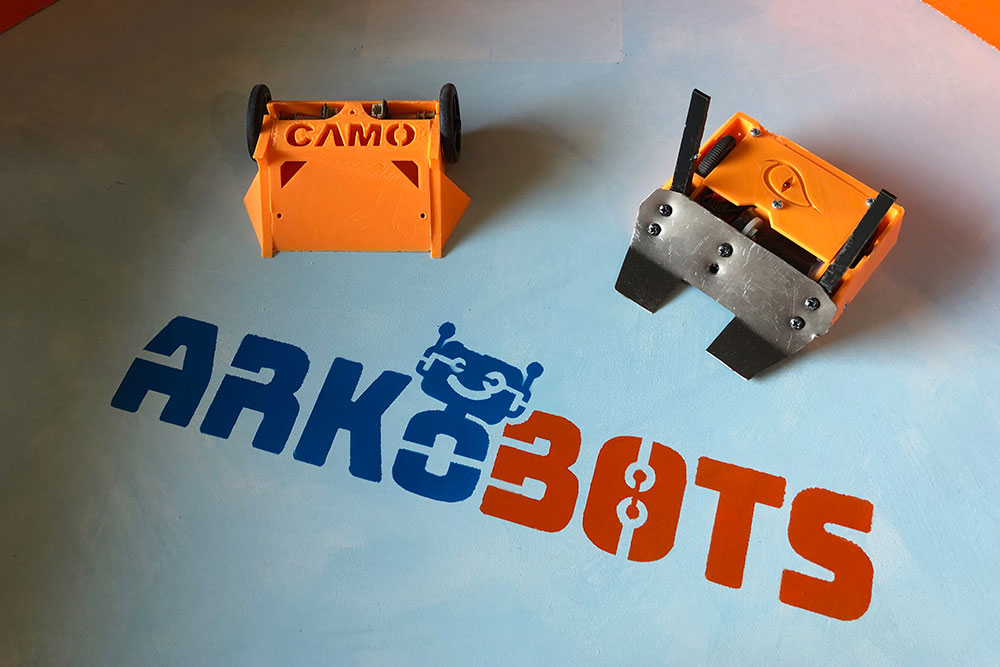
ARKObots Branding
Branding developed with a young entrepreneur at high school for his educational combat robots focused on STEM learning methods. More >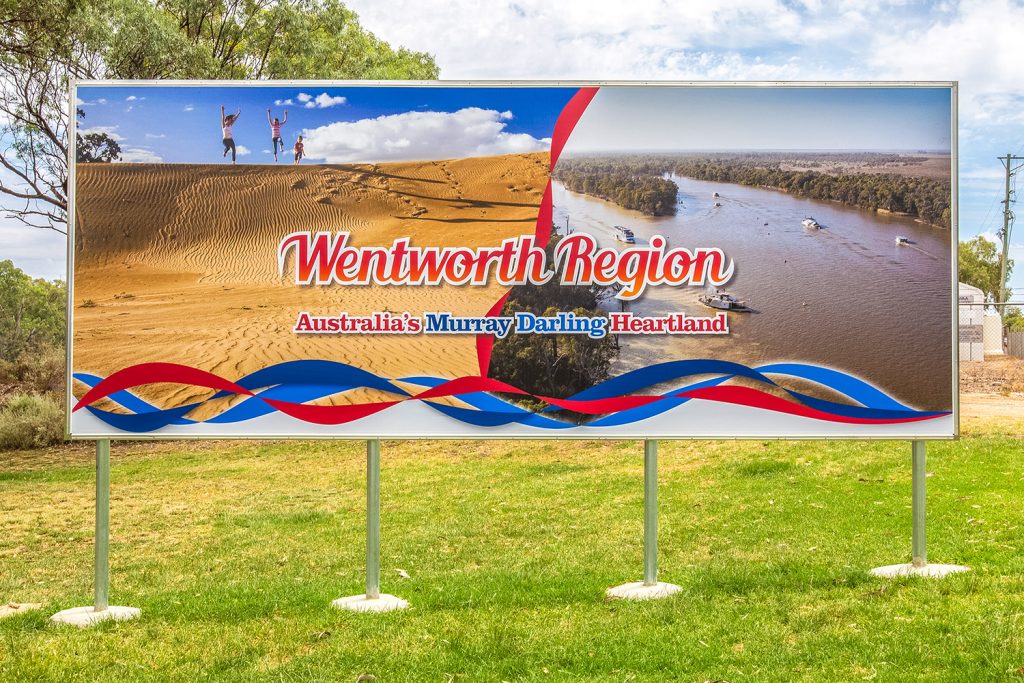
Visit Wentworth Tourism Branding
This tourism marketing strategy was built on 10 core principles. The brand worked for the Shire, community and industry. A brand that can be used across the entire region and a defined point of difference. More >
Mannum Museum and Mannum Township
Working with the Mannum Dock Museum of River History and the Mannum community has been very enjoyable. The museum is the heart of tourism in Mannum and is continually working towards improving its presence for visitors. More >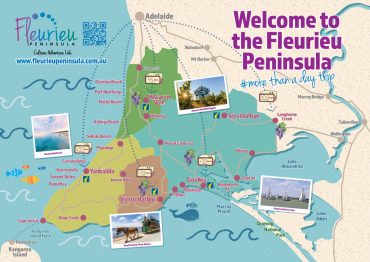
Fleurieu Penisula Tourism Branding
Once I’d worked through the current brand needs of the client we started developing different visual identity elements from both offline to online that aimed to continually build the tourism presence in the region. More >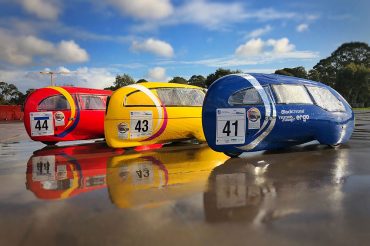
Norwood Morialta Pedal Prix Branding
The pedal prix team at Norwood Morialta High School had an opportunity to use pedal prix to promote the school and improve its image on the track. I developed a brand strategy to take implement the branding. More >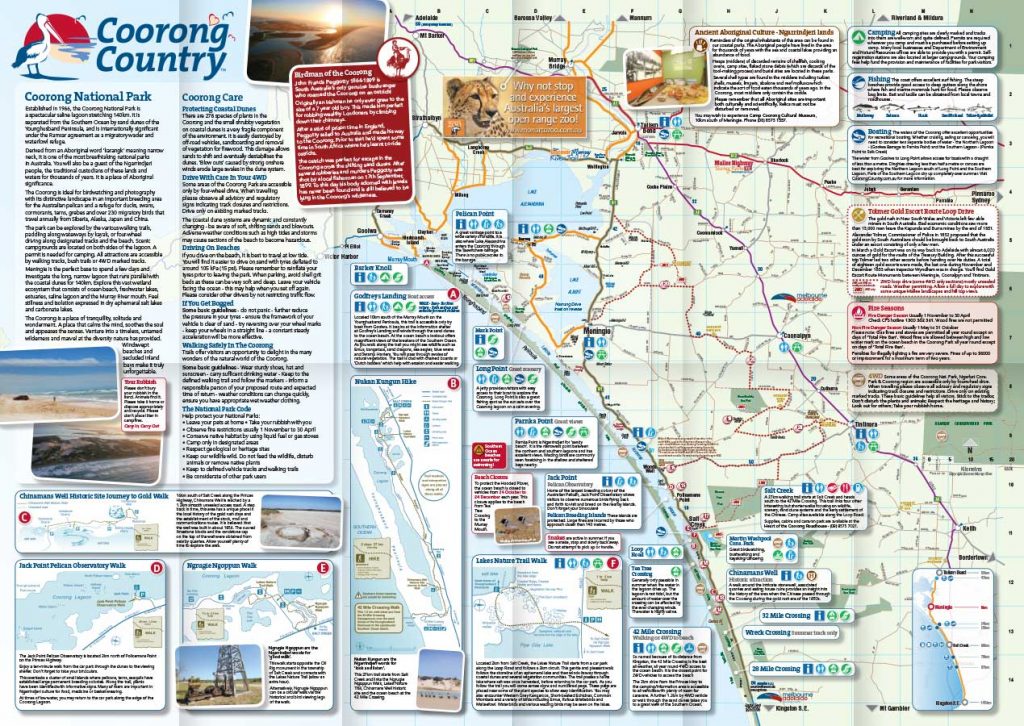
Coorong Country Branding
The Coorong and Meningie region used to be a lost landscape of natural beauty, history and indigenous culture. Developing the Coorong Country brand and supporting the local community has been very rewarding More >

